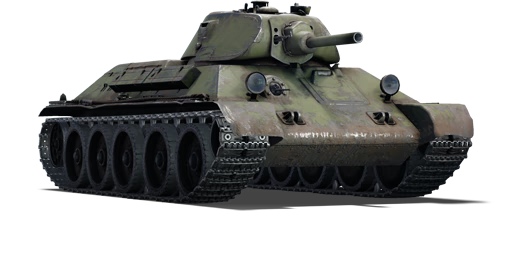



The T-34 (1940) is the first variant of the T-34 medium tank family. The T-34 medium tank family was and continues to be legendary. It is not only one of the most produced tank types of World War II, with 84,000 units produced of all variants (compared to 48,966 M4 Sherman units produced of all variants), but it is also one of the longest-serving tanks ever created. Many are still stored as reserves in bases in Asia and Africa, and others saw active service in the 1990s (the 1991-1999 Yugoslav war). From the 1950s until the 1980s, they were the backbone of numerous armoured armies around the world. The fundamental design was developed for the first time in 1938 with the A-32, which was based in part on the BT-7M, a late version of the US-born Christie tank. The first mass-production variant was the T-34 (1940). However, the T-34 (1940) variant suffered from a number of issues. Since the intricate hull front armour component was difficult to construct and there was a lack of V12 diesel engines, most of the T-34 (1940) variant tanks were outfitted at the Gorky factory with the underpowered BT tank's Mikulin M-17 engine, as well as unreliable interim transmission and clutch. The first 76 mm L-11 tank gun was criticized for its poor muzzle velocity. It was later put into production, with the first regiments receiving it in July 1941.
Introduced in the Closed Beta Test for Ground Forces before Update 1.41, the T-34 (1940) was the Soviet Army ground forces' first mass-produced medium tank. The T-34 medium tank family, with its cutting-edge and revolutionary innovations, played a key role in World War II. The introduction of sloped armour on the T-34 (1940) is one of the most important features that players will undoubtedly appreciate. Despite its 45 mm thickness, the sloping nature of the hull frontal armour plate results in a substantially higher effective thickness. Most adversaries will struggle to pierce the T-34 (1940) frontal hull from a distance. In addition, the T-34 (1940) has exceptional off-road agility and mobility. This is critical because paved roads are uncommon on some maps. This enables the T-34 (1940) to readily traverse muddy and soft terrain, gaining crucial ground early in the battle.
| Ammunition | Type | Armor penetration (mm) at a distance: | |||||
|---|---|---|---|---|---|---|---|
| 10 m | 100 m | 500 m | 1000 m | 1500 m | 2000 m | ||
| APHEBC | 78 | 76 | 70 | 62 | 56 | 50 | |
| HE | 10 | 10 | 10 | 10 | 10 | 10 | |
| Shrapnel | 35 | 34 | 30 | 26 | 22 | 19 | |
| APBC | 90 | 88 | 79 | 69 | 60 | 53 | |
| Belt | Belt filling | Armor penetration (mm) at a distance: | |||||
|---|---|---|---|---|---|---|---|
| 10 m | 100 m | 500 m | 1000 m | 1500 m | 2000 m | ||
| AP-I/API-T | 13 | 12 | 7 | 3 | 2 | 0 | |












Mobility | |
|---|---|
Protection |
|---|
Firepower | |
|---|---|